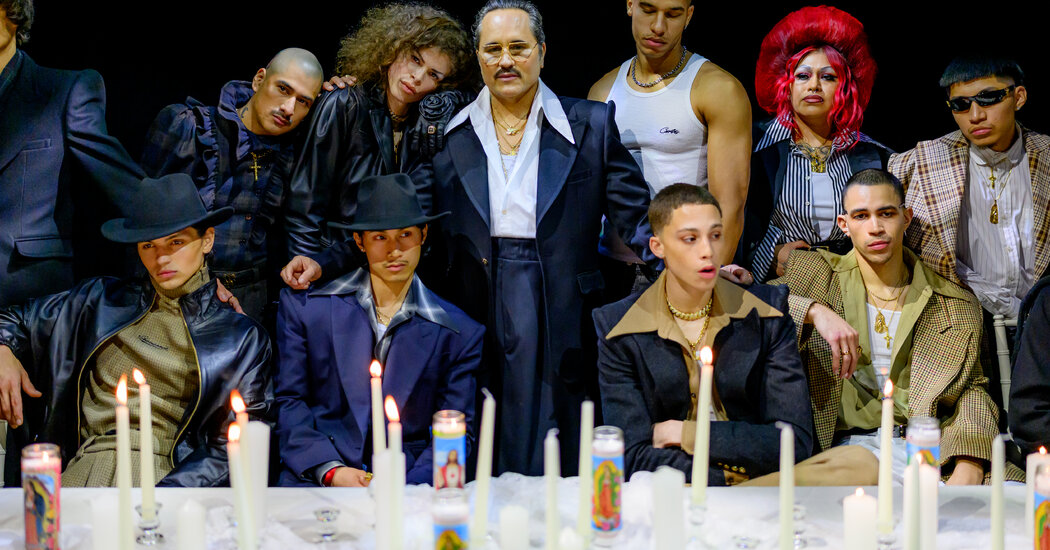The sun had gone down on the first day of New York Fashion Week — which also happened to be the first day of the whole fashion season — when Willy Chavarria invited everyone to a drive-in on the far reaches of Greenpoint, Brooklyn.
OK, not exactly a drive-in; more like a walk-in, but you get the idea. An old warehouse was bathed in a red light, and there were roses on every chair. Julia Fox, wearing a lavish white robe, Vermeer hat and not much else, chatted to Amanda Lepore and Sam Smith. Then a screen came down on a black velvet curtain and a short film started to play. It starred a host of characters diverse in race, size and sexual orientation, living in one old house, sharing angst and joy, tears and dumbbells and clothes. At the end, they had a dance party.
It was less a movie than a mood. One that hasn’t been seen in fashion in quite a long time. One that set the scene for the show that came next. One that said sitting on the sidelines wasn’t going to be enough any more; get up and do something. Even if it’s just making clothes — as long as they aren’t just clothes. That has been the mantra for long enough, set to the tune of whispering cashmere.
Enough with discretion and keeping to oneself. Politics is back in fashion. Not as a polemic or a slogan, but as a look. Sometimes you have to design the world you want to see.
Mr. Chavarria did, with a collection that crossed genres and genders: black tie tuxedos, Havana prairie power suits, Victorian biker jackets.
He paired farmer plaids with card shark jackets, sculpted leg o’ mutton sleeves into black leathers and made pussy bows so long they brushed the upper thighs. He reshaped the hourglass by scrapping the corset and pairing four-pleat pants that swished generously around the legs with broad, peak-shouldered jackets that clasped the waist like a hug, in what has become his signature silhouette. He tossed cowboy hats over it all and pinned on supersize rosettes in a Sherlock Holmes houndstooth. Wearing the clothes was his multitude of movie characters (and then some) come to life.
Mr. Chavarria called the collection “Safe From Harm,” suggesting that security should be an inalienable right. That’s a fairly radical idea in the current environment. He spent years as the senior vice president for design at Calvin Klein; he understands the myths of Americana and the monoculture (also, how to construct a garment with grace and polish). He’s just out to blow it up.
In that, Mr. Chavarria is one of the founding fathers of a new wave of New York designers reinventing American style, which has been flopping around in search of a direction since long before Covid-19 threw everyone off course. Nominally, he makes men’s wear — he won the Council of Fashion Designers of America men’s wear award in November — but that’s not all it is. The point is not sticking to the old categories, but erasing them. Billie Eilish has made his work practically her default uniform this awards season.
At the end, the models gathered around a long table, strewed with candles and covered in lace, in a “Last Supper” tableau. Values had been put on the menu, and in the wardrobe. Everyone can dine on that, if they dare.







